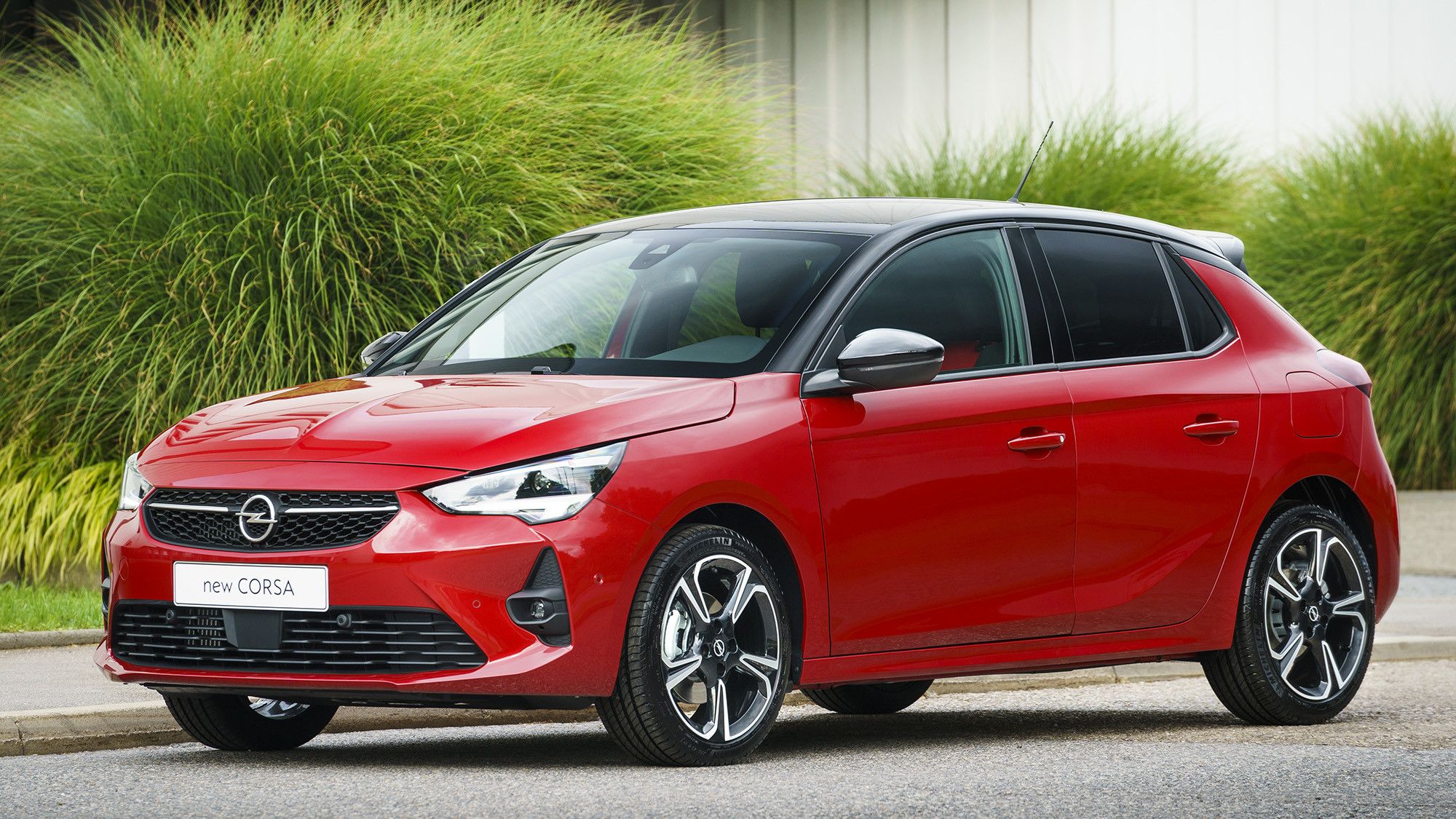
The letter F next to the name of the best-selling and popular model of the German lightning / blitz / means that the model is in the sixth generation. And it is very different from everything that came before it. Because it is the first car designed by the new owner of the old German brand, the PSA Group, a brand new car that shares many similarities with its French platform twin, the Peugeot 208.
Also, for the first time in its history, the model is an all-electric version. Another major change is the elimination of the sodium version in the lineup. This type of coupe has fallen seriously out of favor in recent years, perhaps due to the more difficult entry and exit, and the difficulty of accommodating a child seat. In addition, modern design cues make the five-door coupe look as sporty as the three-door.
The new Corsa will definitely remain a favorite of small families, young drivers and those looking for an inexpensive car that has enough appeal and good dynamics. And the main competitor of the equally popular Ford Fiesta and Volkswagen Polo on the market, as well as numerous offers in the compact class from all leading automakers.
I had the opportunity to test the car among the first journalists — with the AutoBest jury on a pan-European test drive of the car in Croatia, as well as its very short electric version Corsa-e, which is still being tested by engineers. In driving, it is almost completely identical to its French twin Peugeot e-208 in terms of dynamism and sedentary battery charging. An interesting point is that the compact and powerful electric motor makes even the most maneuverable in the model range — acceleration from standstill to 100 km / h takes 8.1 seconds.
Perhaps the main figure in the passport of the new car is 908 kilograms without load, which makes it the lightest B-class on the market. Even the incredible boom in sales of off-road vehicles will prevent the compact German family car from remaining the best-selling model in the brand’s lineup.
The Corsa now looks extremely modern and is filled with more extras and equipment than ever before. The appearance of the car is significantly different from the French twin thanks to the efforts of the brand’s chief designer Mark Adams and his team.
Opel’s designers have managed to give the car a mature and sporty look in contrast to the brighter and more sophisticated look of the Peugeot 208 by Nafren Lions lead designer Gilles Vidal, using the same CMP platform. At the same time, Corsa does not stand aside from the Opel model range and relies on its company’s signature features, such as boomerang-shaped LED daytime running lights and duplicating side and rear speaker covers.
In fact, the design of the 2020 Opel Corsa offers the most dramatic styling change ever. This is most evident in the top version of the GS Line, the difference in appearance and proportions of the car is impressive, especially when it is next to its Corsa E predecessor.
Measures to reduce the weight of the wheel, its improved aerodynamics, thanks to innovations such as active dampers in the grille, higher speed closures, a flattened underbody and a rear spoiler, make it much more economical and dynamic.
The PSA CMP platform is designed to accommodate different types of powertrains without radical changes to the body structure. This allows the Corsa F to use both petrol and diesel engines or purely electric propulsion. This allows the production line at the group’s plant in the Spanish city of Zaragoza to make the vehicle flexible in response to demand for its various variants.
The engine range includes a 1.2-liter 3-cylinder naturally aspirated petrol unit with 75 hp. and its turbo options with 100 or 130 hp, 1.5-liter diesel 102 hp, as well as a 136 hp elvariant. They all have a boot capacity of 309 liters, and if you need more space, the rear seats are split 60/40 and fold down to increase the volume to 1081 liters.
The interior designers also did a good job, there is an upholstery made of soft touch materials, a comfortable multifunctional leather steering wheel with a slight sporty slope due to the flat bottom makes a pleasant impression. Interior quality is also a strong point of the sixth generation, and the level of visible premium is raised by the steering bodies combined with these excellent group models — for example, those used in the Citroen C5 Aircross and Peugeot 3008 of the PSA Group’s automation selector. .
At the request of the customer, the new Corsa can be equipped with truly luxurious options, such as heated and massage functions for the front seats, and the heated steering wheel function is an indispensable advantage on frosty winter days. There are typical high-end car accessories such as wireless smartphone charging, a 10-inch touchscreen display with the latest phone connection protocols, and a digital instrument cluster.
The driver’s seat is arranged in such a way that it feels like you are sitting in the cab, and not just sitting on the seat. It is easy to find the optimal position behind the wheel thanks to a wide range of seat and steering wheel adjustments. There are no AGR-certified seats for this model yet, but this does not reduce driving comfort.
In motion, the original sound of the three-cylinder engines is impressive. In the Oryol region, they seriously took care of reducing the noise that they transmit to the cabin. And for the GS Line version, the engineers did the opposite — they continued to amplify the sound by adding a synthesized «voice» to the mufflers to enhance the sporty driving feel of the car.
The two turbocharged petrol test engines were connected automatically. Even in normal driving mode, the new Corsa offers decent dynamic pace, and the transmission does its job competently, providing smooth and almost imperceptible gear changes.
By borrowing technology from Peugeot engines, carbon dioxide emissions are just 93 g/km. This makes the vehicle very attractive to business customers due to its low fuel consumption of 5.5 liters per 100 km, which is better than the 1.0-liter Ford Fiesta EcoBoost of 5.6 liters.
A 1.5-liter diesel consumes 4 flax per 100 km and emits 85 g / km of CO2, but the price is naturally higher. It will be most suitable for people who travel long distances and motorways, but in light of the new wave of anti-diesels, this is unlikely to be the most sought-after option.
Switching to sport mode reduces the power assist in the steering wheel and activates a more dynamic automatic switching algorithm, it is possible to personally determine the mode of operation with the levers under the steering wheel if you are looking for faster uninstallation and loading of the driver.
The GS Line model, which uses a 130 hp engine, has 17-inch alloy wheels, and the suspension has been improved in the form of additional amplifiers on the front pillars. In this variant, the car is quite agile with a 0-100 km/h time of 8.9 seconds. The GS Line handles twisty roads very well and could be a good basis for an even sportier version, which in previous generations had the GSi badge. Unfortunately, the ORS option for the model is not expected.
European sales of the sixth Corsa have already started at a base price of 13,990 euros. The most expensive option will be the electric drive, but its price will depend on different markets. In Germany, for example, due to government environmental subsidies, the price of the Corsa-e will start at 24,000 euros. Opel estimates that one in four Corsa will be sold in the simplest trim, so it will remain available to former Opel Corsa and Meriva customers, as well as retired windmills.
But since there are buyers who are willing to pay more for interesting and useful options, Opel is hoping for higher cash flow. As an additional cost for Lane Keeping Assist, Forward Collision Warning, Auto Emergency Braking, Traffic Sign Recognition, Auto Parking, IntelliLux Smart LED Matrix Headlights. The latter are the first example of technology «migration» from the upper-lower market class and provide increased safety in the dark thanks to four independently controllable light segments in each headlamp.
After all, the Corsa F relies more on technical excellence and a degree of final customization than style, i.e. the brand’s traditional values, which in the PSA group remain typical of the German engineering centre. The new Corsa F is very beautiful and attractive, not only because of its looks, but also because of its high technical level and refined German driving performance. The car is ideal for city driving, more efficient than ever and offers a complete set of equipment and market-class cars, despite the compact cigar size.
Technical characteristics — engines — three-cylinder petrol 1.2-lattice and two turbo engines with a capacity of 75, 100 and 130 hp. respectively. / 118, 205 and 230 Nm /, diesel 1.5 l turbo 102 hp 250 Nm. Transmissions are 5-speed manual for the naturally aspirated engine, 6-speed manual for the rest, optional automatic for both turbocharged petrols. The maximum speeds in the order are 174, 194/192 automatic transmissions, 208 and 188 km/h. 10.2 s Overall dimensions — 4060/1765/1435 mm, wheelbase 2538 mm. Curb weight — 1055, 1165, 1233 and 1165 kg.





